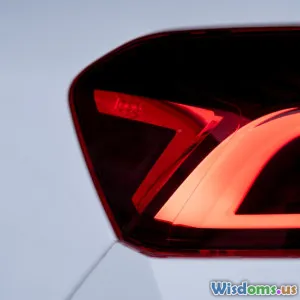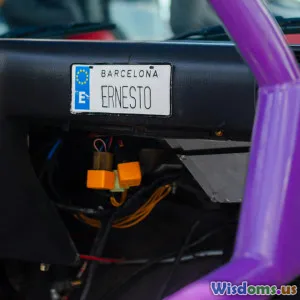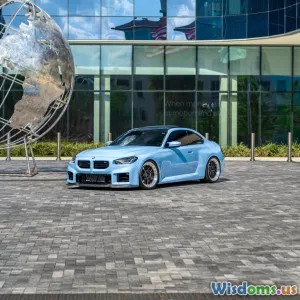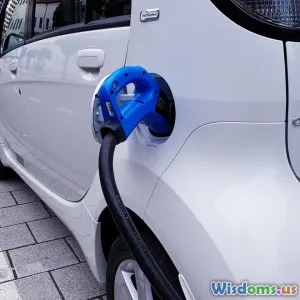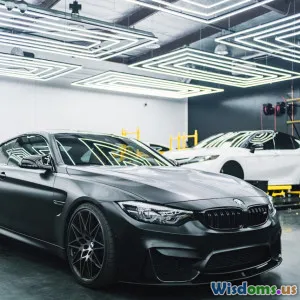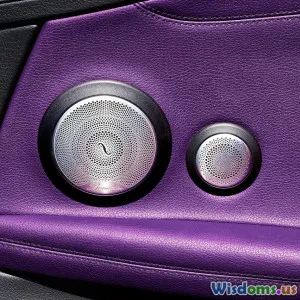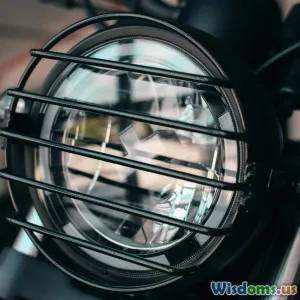
The Hidden Engineering Behind Safe but Stylish Car Grilles
8 min read Explore the intricate engineering that makes car grilles both safe and stylish, blending innovation, safety, and design. (0 Reviews)
The Hidden Engineering Behind Safe but Stylish Car Grilles
Car grilles—often overlooked as mere design flourishes—are, in reality, marvels of intricate engineering. They serve as more than just ornamental façades adorning the front of vehicles. These crucial components strike a delicate balance: providing effective ventilation and engine cooling, ensuring occupant and pedestrian safety, and creating a distinctive aesthetic appeal.
In this in-depth exploration, we'll delve beneath the chrome and plastic layers to uncover how engineers craft car grilles that are simultaneously safe and stylish, blending aerodynamics, material science, pedestrian protection, and brand identity.
1. Introduction: More Than Just a Face-Lift
For most drivers and car enthusiasts, the grille is synonymous with brand identity—a telltale signature defining automotive character. Consider the imposing kidney grilles on BMWs or the cascading pentagonal grille of Lexus vehicles. These visual cues have become emblematic.
Yet beyond branding, grilles have critical roles: they allow airflow into the engine compartment to maintain optimal operating temperatures and protect vital engine parts from debris and impacts. With increasing concern over pedestrian safety and vehicle aerodynamics, the grille's function and form have undergone transformative changes.
2. Functional Roles of Car Grilles
2.1 Thermoregulation and Engine Efficiency
A car engine generates substantial heat during operation. Without proper ventilation, overheating can lead to performance drops or damage. Grilles act as primary portals facilitating air entry to the radiator and intercoolers.
Older vehicles had more open, larger grilles to maximize airflow. For example, classic muscle cars in the 1960s featured broad, open slats prioritizing cooling. Modern engines, however, incorporate tighter designs engineered via computational fluid dynamics (CFD) to optimize airflow efficiency while reducing drag.
According to automotive engineer Dr. Lisa Johnson from MIT, “Advanced grille designs now feature active shutters that open or close based on cooling requirements. This not only aids engine temperature regulation but substantially improves fuel efficiency.”
2.2 Protecting Internal Components
While letting air in, grilles must prevent intrusion of road debris—stones, leaves, insects—that could damage the radiator or delicate electronics like cameras and sensors. Materials need to balance permeability and toughness.
Manufacturers often use reinforced plastics, stainless steel mesh, or aluminum alloys shaped into intricate latticework. For instance, Audi's single-frame grille uses a high-strength aluminum frame with hexagonal meshes, tested rigorously against impacts exceeding 200 joules.
2.3 Enhancing Pedestrian Safety
Increasing pedestrian crash safety is a strong regulatory and design priority. Car fronts are active zones for injuries during collisions.
Advancements include grilles designed with impact-absorbing materials or adaptive elements that deform to minimize injury. Volvo’s City Safety architecture integrates energy-absorbing grille panels and lowers hoods during a collision, reducing head injuries.
Furthermore, electric vehicles (EVs) sometimes have sealed or reduced grilles since their cooling needs diminish, allowing designers to incorporate softer, smoother surfaces upfront promoting pedestrian safety.
3. Design Considerations for Style and Brand Identity
3.1 Signature Shapes and Materials
Car manufacturers consider grille design as a canvas for brand storytelling. BMW’s kidney grilles evolved from traditional chrome frames to large, illuminated panel arrays on the new iX model, blending futuristic style with identity.
Material innovations also contribute to style. Carbon fiber textures, glossy black finishes, and chrome trims can elevate visual appeal while maintaining function.
3.2 Aerodynamics and Noise Reduction
Shape matters not only for looks but for airflow. Designers collaborate with aerodynamicists to reduce drag coefficients (Cd). For example, Tesla’s Model 3 features a mostly solid front fascia with small channel grilles optimized for cooling and minimal air resistance, contributing to a Cd of just 0.23.
Noise generated by airflow through traditional grilles is another consideration. Complex grille patterns and acoustic optimization reduce wind noise, improving cabin comfort.
4. Innovations Elevating the Modern Grille
4.1 Active Grille Shutters (AGS)
AGS systems adjust airflow dynamically. When less cooling is needed, shutters close to improve aerodynamics; they open when cooling demand rises. General Motors and Ford have extensively implemented this technology—Ford claims up to 7% fuel efficiency gains.
4.2 Smart Materials and Sensors
Emerging designs incorporate sensors within grille surfaces to support driver assistance systems, radar, and lidar equipment crucial for autonomous driving.
Transparent grille panels made from specialized polymers allow sensor signals to pass unobstructed while protecting equipment from environmental damage.
4.3 Customization and 3D Printing
3D printing enables rapid prototyping and intricate lattice patterns previously impossible with traditional manufacturing. This supports bespoke designs balancing aesthetics and performance.
Automaker MINI recently unveiled concept grilles with integrated LEDs and complex geometries produced via additive manufacturing.
5. Real-World Testing and Safety Standards
All grille designs undergo stringent testing:
- Impact testing: Standards like FMVSS 201/208 assess potential injury in pedestrian crashes.
- Thermal cycling: Ensures grille materials sustain temperature fluctuations without degradation.
- Corrosion resistance: Tests simulate long-term exposure to environmental challenges.
Manufacturers rely on data-driven insights and adjust engineering choices accordingly. Safety experts emphasize that “the grille is an essential interface between the vehicle, environment, and occupants,” underscoring the multidisciplinary nature of its design.
6. Conclusion: A Harmonious Blend of Art and Engineering
The guard at your car’s front is far more than meets the eye. Behind the stylish facade lies a sophisticated blend of engineering disciplines—thermodynamics, material science, safety engineering, and graphic design—all converging to safeguard performance and lives while carving unique visual identities.
Next time you admire a gleaming grille, remember it is a silent champion, an innovatively crafted portal delivering both elegance and protection.
Call to Action: Next time you consider a vehicle, pay attention to its grille design—not just as a logo holder but as a key player in your car’s safety and efficiency. Innovation here continues to evolve rapidly, reflecting broader trends toward smarter, safer, and more sustainable mobility.
References:
- Johnson, L. (2023). Automotive Cooling Systems and Advanced Grille Design. MIT Press.
- Volvo Safety Innovations, Volvo.com.
- Tesla Aerodynamics Overview, Tesla Corporate Site.
- Ford AGS Impact Study, Ford Motor Company Technical Briefs.
- MINI Concept Grille Release, MINI Newsroom.
Images and diagrams are recommended for further editions to visually demonstrate grille engineering features.
Rate the Post
User Reviews
Popular Posts











